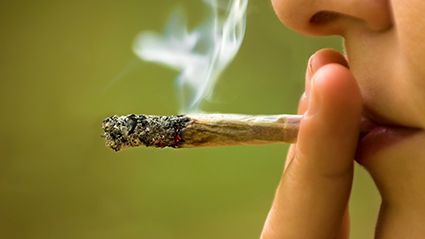TUESDAY, Feb. 16, 2021 (HealthDay News) — As pot gains in acceptance among adults, teenagers appear to be more tempted to try it, a new study out of California finds.
After the state legalized marijuana use for adults in 2016, teens’ use of the drug also climbed after years of steady decline.
Researchers analyzed survey data from more than 3 million seventh-, ninth- and 11th-graders, who answered questions about their marijuana use from the 2010-11 school year through 2018-19.
In the final two surveys, the question about marijuana use was changed to include the words “smoke, vape, eat or drink,” to reflect the growing variety of marijuana products.
Between the 2017-18 and 2018-19 school years, after pot was legalized for adults, there was a 23% rise in marijuana use over the past 30 days and teens’ likelihood of lifetime use rose 18%.
Vaping may have contributed to increased use of the drug, according to the researchers. They also noted that there were greater increases among groups of teens with historically lower rates of use, as well as in past 30-day use among older teens, males, Blacks and Asian youth who were regular users.
The findings were published Feb. 15 in the Journal of Studies on Alcohol and Drugs.
“I was somewhat surprised to see relatively greater increases in the prevalence of marijuana use among younger adolescents [seventh-graders] relative to ninth- and 11th-graders, among females versus males, among non-Hispanic versus Hispanic youth, and among whites versus youth in other racial groups,” said lead researcher Mallie Paschall, senior research scientist at the Prevention Research Center of the Pacific Institute for Research and Evaluation in Berkeley, Calif.
“In other words,” he added in a journal news release, “There were greater increases in marijuana use prevalence after recreational marijuana legalization among youth in ‘low-risk’ groups, which is concerning.”
One possible reason why is that legalization normalized marijuana use, Paschall suggested.
“We also need to look more closely at what’s happening at the local level, because there is a lot of variation in marijuana policies in communities across California and the United States,” he said.
Paschall added that researchers need to know more about how young people are getting pot and what forms they are using since there is such a variety of cannabis products available now.
More information
The U.S. Centers for Disease Control and Prevention has more on teens and marijuana.
SOURCE: Journal of Studies on Alcohol and Drugs, news release, Feb. 15, 2021
Copyright © 2025 HealthDay. All rights reserved.

